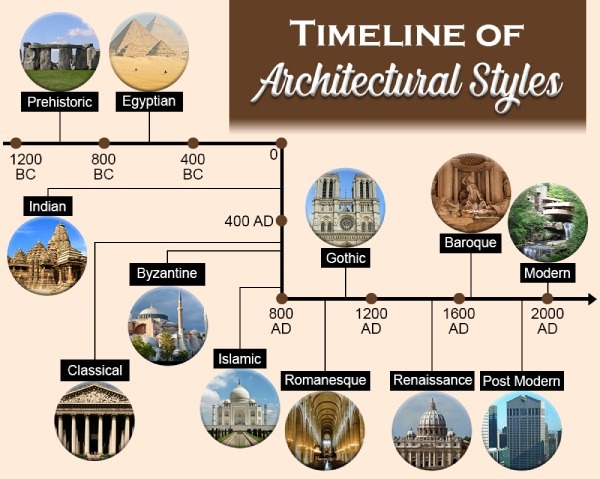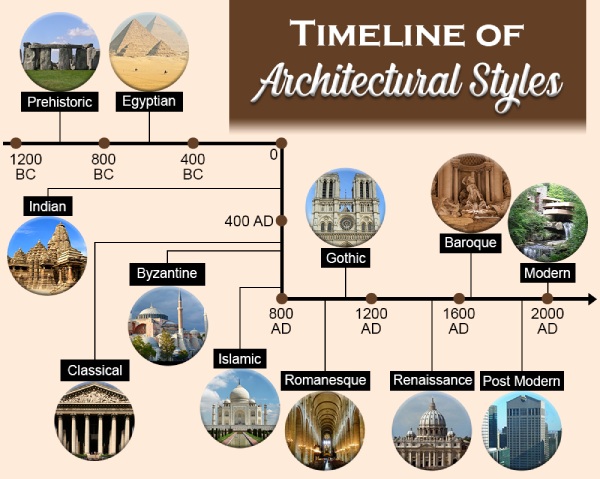Exploring Different Architectural Styles For Your Building Project
Are you planning a new building project and wondering what architectural style to choose? Look no further! Exploring different architectural styles can be a fun and exciting way to bring your vision to life. From traditional to modern, each style has unique characteristics that can make your building stand out. In this article, we will delve into the world of architecture and explore the various styles that can inspire your project. So, let’s get started!
Exploring Different Architectural Styles for Your Building Project
Choosing an architectural style for your building project is an important decision. It not only affects the appearance of your building, but also its functionality, energy efficiency, and cost. With so many architectural styles to choose from, it can be overwhelming to make a decision. In this article, we will explore different architectural styles and their unique features to help you make an informed decision.
Modern Architecture
Modern architecture is characterized by its simplicity and clean lines. This style often incorporates industrial materials such as steel, concrete, and glass. Modern buildings prioritize functionality and often have a minimalist design. They are also energy-efficient and environmentally friendly, making them a popular choice for new buildings. Some benefits of modern architecture include:
- Minimalist design that can enhance the appeal of the building
- Use of environmentally friendly materials to reduce the carbon footprint
- Energy-efficient features that can save on utility bills
However, modern architecture may not be suitable for all types of buildings. The style may not be well-suited for buildings that require a traditional or historical aesthetic.
Contemporary Architecture
Contemporary architecture is similar to modern architecture in terms of its clean lines and functionality. However, contemporary architecture incorporates a wider range of materials, including wood and stone. Contemporary buildings often have a unique design that can be both striking and functional. Some benefits of contemporary architecture include:
- Unique design that can set your building apart from others
- Use of a wide range of materials that can add texture and depth to the building
- Energy-efficient features that can save on utility bills
However, like modern architecture, contemporary architecture may not be suitable for all types of buildings. The style may not be well-suited for buildings that require a traditional or historical aesthetic.
Traditional Architecture
Traditional architecture is characterized by its ornate details, symmetry, and use of natural materials such as wood and stone. This style is often associated with historical buildings and is popular for buildings such as homes, churches, and government buildings. Some benefits of traditional architecture include:
- Timeless design that can add value to your building
- Use of natural materials that can add warmth and character to the building
- Well-suited for buildings that require a traditional or historical aesthetic
However, traditional architecture may not be suitable for all types of buildings. The style may not be well-suited for modern buildings or buildings that require a more minimalist design.
Tudor Architecture
Tudor architecture is characterized by its half-timbered exteriors, steeply pitched roofs, and decorative chimneys. This style is often associated with English country homes and is popular for homes and buildings that require a traditional or historical aesthetic. Some benefits of Tudor architecture include:
- Unique design that can add character and charm to your building
- Use of natural materials that can add warmth and texture to the building
- Well-suited for buildings that require a traditional or historical aesthetic
However, Tudor architecture may not be suitable for all types of buildings. The style may not be well-suited for modern buildings or buildings that require a more minimalist design.
Colonial Architecture
Colonial architecture is characterized by its symmetry, columns, and decorative shutters. This style is often associated with historical buildings and is popular for homes, government buildings, and universities. Some benefits of colonial architecture include:
- Timeless design that can add value to your building
- Use of natural materials that can add warmth and character to the building
- Well-suited for buildings that require a traditional or historical aesthetic
However, colonial architecture may not be suitable for all types of buildings. The style may not be well-suited for modern buildings or buildings that require a more minimalist design.
Victorian Architecture
Victorian architecture is characterized by its ornate details, asymmetry, and grandeur. This style is often associated with historical buildings and is popular for homes, museums, and government buildings. Some benefits of Victorian architecture include:
- Unique design that can add character and charm to your building
- Use of natural materials that can add warmth and texture to the building
- Well-suited for buildings that require a traditional or historical aesthetic
However, Victorian architecture may not be suitable for all types of buildings. The style may not be well-suited for modern buildings or buildings that require a more minimalist design.
Mediterranean Architecture
Mediterranean architecture is characterized by its stucco exteriors, red-tiled roofs, and arched openings. This style is often associated with homes in warm climates and is popular for homes and resorts. Some benefits of Mediterranean architecture include:
- Unique design that can add character and charm to your building
- Use of natural materials that can add warmth and texture to the building
- Well-suited for buildings in warm climates
However, Mediterranean architecture may not be suitable for all types of buildings. The style may not be well-suited for buildings in colder climates or buildings that require a more minimalist design.
Art Deco Architecture
Art Deco architecture is characterized by its geometric shapes, bold colors, and use of metal and glass. This style is often associated with buildings from the 1920s and 1930s and is popular for commercial buildings and apartments. Some benefits of Art Deco architecture include:
- Unique design that can add character and charm to your building
- Use of a wide range of materials that can add texture and depth to the building
- Well-suited for commercial buildings and apartments
However, Art Deco architecture may not be suitable for all types of buildings. The style may not be well-suited for buildings that require a more traditional or historical aesthetic.
Classical Architecture
Classical architecture is characterized by its symmetry, columns, and use of marble and stone. This style is often associated with historical buildings and is popular for government buildings and universities. Some benefits of classical architecture include:
- Timeless design that can add value to your building
- Use of natural materials that can add warmth and character to the building
- Well-suited for buildings that require a traditional or historical aesthetic
However, classical architecture may not be suitable for all types of buildings. The style may not be well-suited for modern buildings or buildings that require a more minimalist design.
Gothic Architecture
Gothic architecture is characterized by its pointed arches, ribbed vaults, and stained glass windows. This style is often associated with churches and is popular for buildings that require a grand and dramatic aesthetic. Some benefits of Gothic architecture include:
- Unique design that can add character and charm to your building
- Use of natural materials that can add warmth and texture to the building
- Well-suited for buildings that require a grand and dramatic aesthetic
However, Gothic architecture may not be suitable for all types of buildings. The style may not be well-suited for modern buildings or buildings that require a more minimalist design.
In conclusion, choosing an architectural style for your building project is an important decision. It can affect the appearance, functionality, energy efficiency, and cost of your building. By exploring different architectural styles and their unique features, you can make an informed decision that meets your needs and preferences.
Frequently Asked Questions
What are the different architectural styles that can be explored for a building project?
There are various architectural styles that can be explored for a building project. Some of the popular styles include Modernist, Art Deco, Gothic, Victorian, and Colonial. Each style has its unique characteristics and design elements that can be incorporated into your building project.
Modernist architecture is characterized by clean lines, minimalism, and the use of modern materials such as steel and glass. Art Deco, on the other hand, is characterized by geometric shapes, bold colors, and the use of materials such as marble, stainless steel, and glass.
How do I choose the right architectural style for my building project?
Choosing the right architectural style for your building project can be overwhelming. It is important to consider your personal preferences, the purpose of the building, and the surrounding environment. You can also consult with an architect or a design professional to help you determine which style will be most suitable for your project.
It is also important to consider the cost implications of each style. Some styles may require more expensive materials and construction techniques, which may impact your budget.
Can I mix different architectural styles in my building project?
Yes, you can mix different architectural styles in your building project. This can create a unique and personalized design that reflects your individual style and preferences. However, it is important to ensure that the different styles blend seamlessly to create a cohesive and harmonious design.
You can consult with an architect or a design professional to help you incorporate different styles into your building project in a way that complements each other.
What are the benefits of exploring different architectural styles for my building project?
Exploring different architectural styles for your building project can provide numerous benefits. It can help you create a unique and personalized design that reflects your individual style and preferences. It can also enhance the aesthetic appeal of your building and create a distinct identity.
In addition, exploring different architectural styles can also increase the resale value of your property. A well-designed building with a unique architectural style can be more appealing to potential buyers and can command a higher price in the market.
What are the challenges of exploring different architectural styles for my building project?
Exploring different architectural styles for your building project can also pose some challenges. It can be difficult to blend different styles seamlessly and create a cohesive and harmonious design. It can also be more expensive as different styles may require different materials and construction techniques.
Furthermore, it can be challenging to find an architect or a design professional who is knowledgeable and experienced in incorporating different styles into a building project. It is important to do your research and choose a professional who has the expertise and skills to create a successful design.
Explore the Most Popular Home Exterior and Architecture Styles in the USA
In conclusion, exploring different architectural styles for your building project is a crucial step in creating a unique and visually stunning structure. By considering various styles, you can find inspiration and ideas that will help you create a building that stands out and fits your vision.
It is important to remember that architectural styles are not limited to a specific time period or culture. You can mix and match different elements to create a style that is truly your own. Whether you prefer a traditional or modern look, there are countless options to explore.
Finally, working with an experienced architect or designer can help you navigate the many choices and make informed decisions about your building’s style. With their guidance, you can create a building that not only looks beautiful but also functions well for years to come. So take the time to explore different architectural styles and find the one that best suits your project – you won’t be disappointed!




Leave a Reply